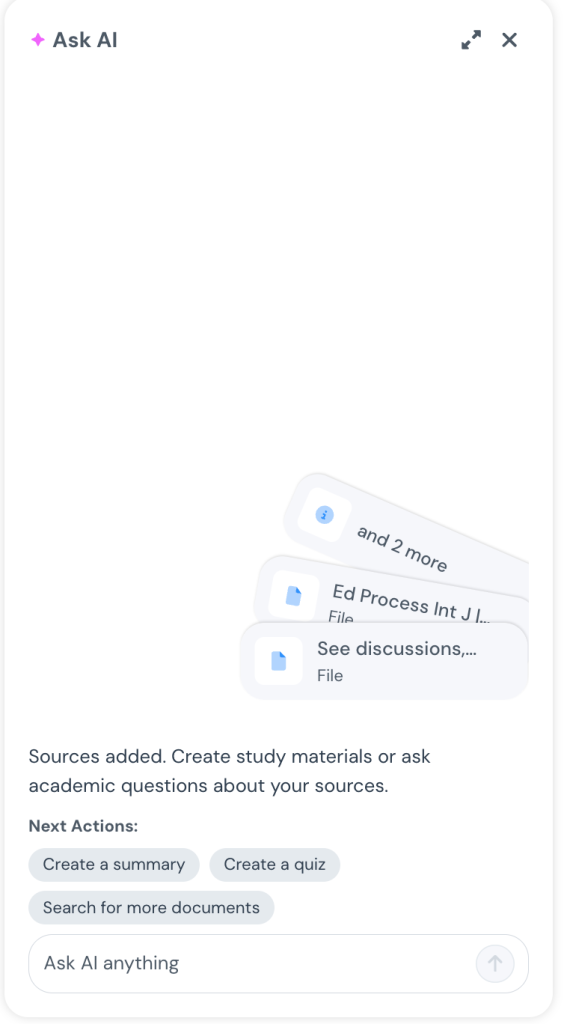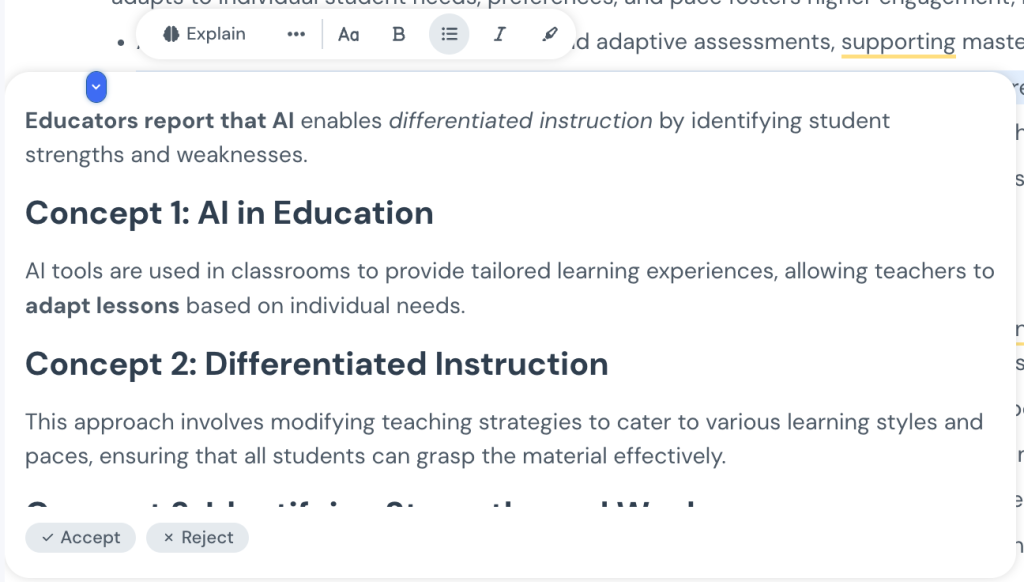The Research Struggle Students Know Too Well
Every student knows the chaos of research: open tabs everywhere, folders full of lecture notes, and dozens of unread PDFs. The hardest part is not the effort but making sense of unstructured information. Sorting, reading, and summarizing piles of academic material can quickly feel overwhelming during the student research process.
However, AI-powered research assistants are transforming how students manage this overload. A study published on arXiv analyzed 124 student sessions and found that AI use shifted learning behavior from simple comprehension to deeper levels of analyzing and evaluating, the hallmarks of higher-order thinking.
Studocu AI builds on this same principle. By turning cluttered PDFs into clear, organized outlines, it helps students move beyond passive reading to critical engagement. Hence, bridging the gap between scattered research and structured understanding.
Table of contents
How Studocu AI Simplifies the Research Process?
Every student approaches research differently; some start with piles of readings, others with scattered notes or unfinished drafts. Yet, most share the same challenge: organizing it all into something clear and useful.
That is where AI tools step in, turning research chaos into structured, ready-to-use material. Here’s how you can achieve that structure with Studocu AI:
1. Upload PDFs or Articles
You can start by uploading your readings, journal papers, or lecture notes directly to the platform. Once you add your research papers and other material, it will appear under the ‘Sources’ for you to navigate and access. It also gives you an option to record your files, such as lectures or simply you talking aloud any ideas or points you want to include in your research.


The Ask AI tool instantly appears once you have your content uploaded. It scans each document, identifying key ideas, headings, and arguments. This quick process saves time and creates a solid foundation for deeper study.

2. Automatic Summarization and Structuring
Once uploaded, you can simply prompt the ‘Ask AI’ within the tool to extract any information you want from the resources. It can condense complex academic text into clear, logical sections. It can merge information from multiple resources into a single structured document for you to scan.

It results in a detailed and organized output that you can easily go through to understand all your sources simultaneously. This organization helps to grasp key concepts faster and eliminates hours of manual sorting and note-taking.
3. Customize, Refine, Review, and Analyze
Every outline remains flexible. Students can merge several papers, add personal notes, or include professor feedback to tailor the content to their specific student research goals. This customization not only encourages critical thinking but also deepens understanding of the material.

In this editable version of your notes, you can prompt the AI to explain any particular part to deepen your understanding as needed. Once prompted, it will provide you an explanation in a pop-up over your notes with the choice to either accept or reject it.

You can also prompt the tool to answer any particular question within your notes, or even get examples to further explain a point you have highlighted.

4. Export and Collaborate
Once you have prepared your notes and an outline, you can share them directly with your classmates. The platform supports real-time collaboration, allowing multiple users to edit, comment, and build on the same research document, making teamwork smooth and efficient.
In essence, Studocu AI takes the stress out of academic research. It transforms unstructured content into organized, collaborative, and actionable insights, helping students focus less on sorting information and more on understanding and creating knowledge.
Use Cases: Turning Messy PDFs into Manageable Student Research Notes
In today’s academic environment, students often face research overload, while AI can help transform fragmented information into clear, structured, and actionable outlines that make studying and writing far more efficient.
Let’s look at some key use cases within the world of research for a tool like Studocu AI:
Simplifying Literature Reviews
Students can upload multiple journal papers or readings, and the AI instantly extracts recurring theories, major arguments, and comparative insights. The result is a comprehensive, ready-to-use literature review outline that highlights key connections across sources, saving hours of manual summarization and cross-referencing.
Drafting Research Proposals
Early researchers can use the tool to identify research gaps, objectives, and methodological frameworks within uploaded studies. This automated analysis helps structure proposals faster and more clearly, ensuring that students spend more time refining their ideas rather than sifting through endless pages of text.
Collaborative Research Projects
Group work becomes seamless with shared workspaces. Students can merge their individual sources into one collective document, where everyone edits, comments, and contributes in real time. The AI organizes findings under unified headings, keeping the research consistent and well-structured across the team.
Presentation Prep
When it is time to present findings, it can condense long readings into concise, bullet-point summaries perfect for slides or oral presentations. It ensures clarity and precision, helping students focus on delivering their message rather than formatting it.
Thus, as classrooms evolve and workloads grow, these tools reshape how students learn, collaborate, and communicate ideas. With AI support, research is no longer about managing information but about mastering it.
From Clutter to Clarity: Why It Matters
Research success depends on how well you can make sense of the resources and their information. Gathering dozens of papers or lecture notes means little if they remain disorganized or unread. What truly defines great research is the ability to interpret, connect, and apply ideas meaningfully.
AI tools like Studocu AI make this shift possible by taking over repetitive and mechanical tasks. Instead of spending hours sorting PDFs or formatting notes, students can focus on deeper analysis and synthesis, the parts of learning that matter most.
A meta-analysis in Computers found that students using AI tools completed programming tasks faster and achieved higher performance scores than those who did not. Likewise, a study in Discover Sustainability showed that AI significantly reduced research time and improved data management quality in academic work.
Together, these studies demonstrate that AI integration does not just save time; it elevates academic outcomes. Along with the real-time collaboration it offers, it can transform academic chaos into clarity.
In the end, student research is no longer about wrestling with cluttered PDFs, but mastering ideas. With Studocu AI, every document becomes an insight-ready structure, helping students study smarter, reduce stress, and turn complexity into understanding.











